 Technology peripherals
Technology peripherals
 AI
AI
 To effectively utilize multi-level user intentions, Hong Kong University of Science and Technology, Peking University, etc. proposed a new session recommendation model Atten-Mixer
To effectively utilize multi-level user intentions, Hong Kong University of Science and Technology, Peking University, etc. proposed a new session recommendation model Atten-Mixer
To effectively utilize multi-level user intentions, Hong Kong University of Science and Technology, Peking University, etc. proposed a new session recommendation model Atten-Mixer
As an intelligent information filtering technology, the recommendation system has been widely used in actual scenarios. However, the success of recommendation systems is often based on a large amount of user data, which may involve users' private and sensitive information. In scenarios where user information is restricted by privacy protection or cannot be obtained, traditional recommendation systems often fail to perform well. Therefore, how to build a trustworthy recommendation system while ensuring privacy and security is an urgent problem to be solved.
In recent years, as users pay more and more attention to their own privacy, more and more users tend to use online platforms without Perform login operations, which also makes anonymous session-based recommendations an important research direction. Recently, researchers from Hong Kong University of Science and Technology, Peking University, Microsoft Asia Research and other institutions have proposed a new model Atten-Mixer that efficiently utilizes multi-level user intentions. The research paper received an honorable mention for Best Paper at WSDM2023.

##Paper link :https://dl.acm.org/doi/abs/10.1145/3539597.3570445
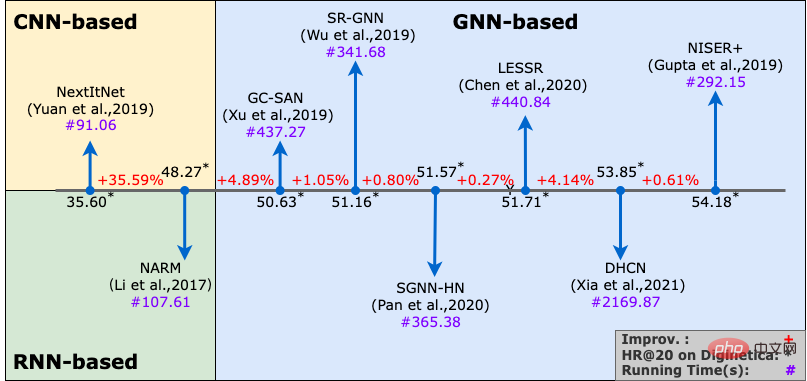
##However, these models Performance improvements on benchmark datasets are limited compared to the exponential increase in model complexity. Faced with this phenomenon, this paper raises the following questions: Are these GNN-based models too simple or too complex for SBR?
##Preliminary analysis
##In order to answer this question, the author Try to deconstruct existing GNN-based SBR models and analyze their role in SBR tasks.
Generally speaking, a typical GNN-based SBR model can be decomposed into two parts:
(1) GNN module. The parameters can be divided into propagation weights for graph convolution and GRU weights for fusing the original embedding and graph convolution output.
(2) Readout module. Parameters include attention pooling weights for generating long-term representations and transformation weights for generating session representations for prediction.
#Next, the author discusses these two parts respectively. Sparse Variational Dropout (SparseVD) is used, a commonly used neural network sparsification technology, and the density ratio of parameters is calculated when training the model.
The density ratio of a parameter refers to the ratio of the number of elements greater than a certain threshold to the total number of elements in the weight of the parameter. Its value can be used to measure the importance of the parameter.
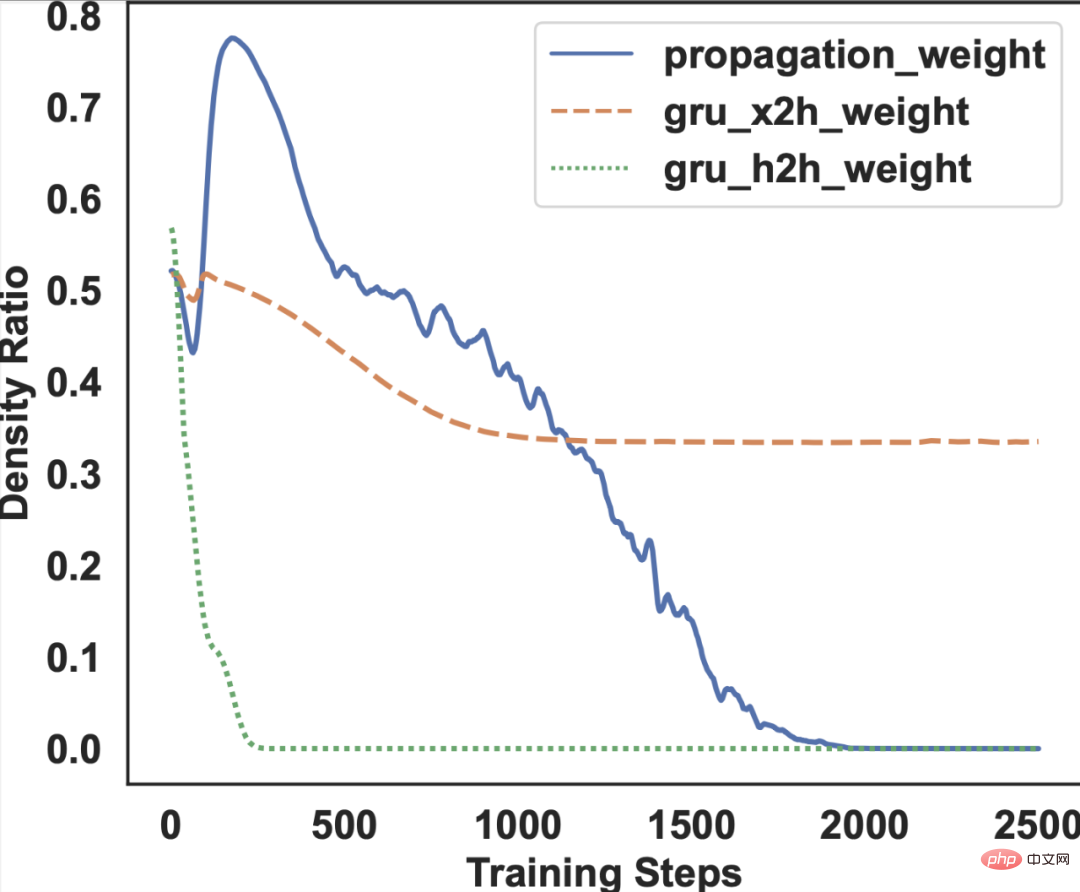
#GNN module.
Since GNN has many parameters, with random initialization, there will be many at the beginning Knowledge to be updated. Therefore, we can see that the density ratio of the graph convolution propagation weight will fluctuate in the first few batches of data. As training stabilizes, the density ratio will tend to 0.
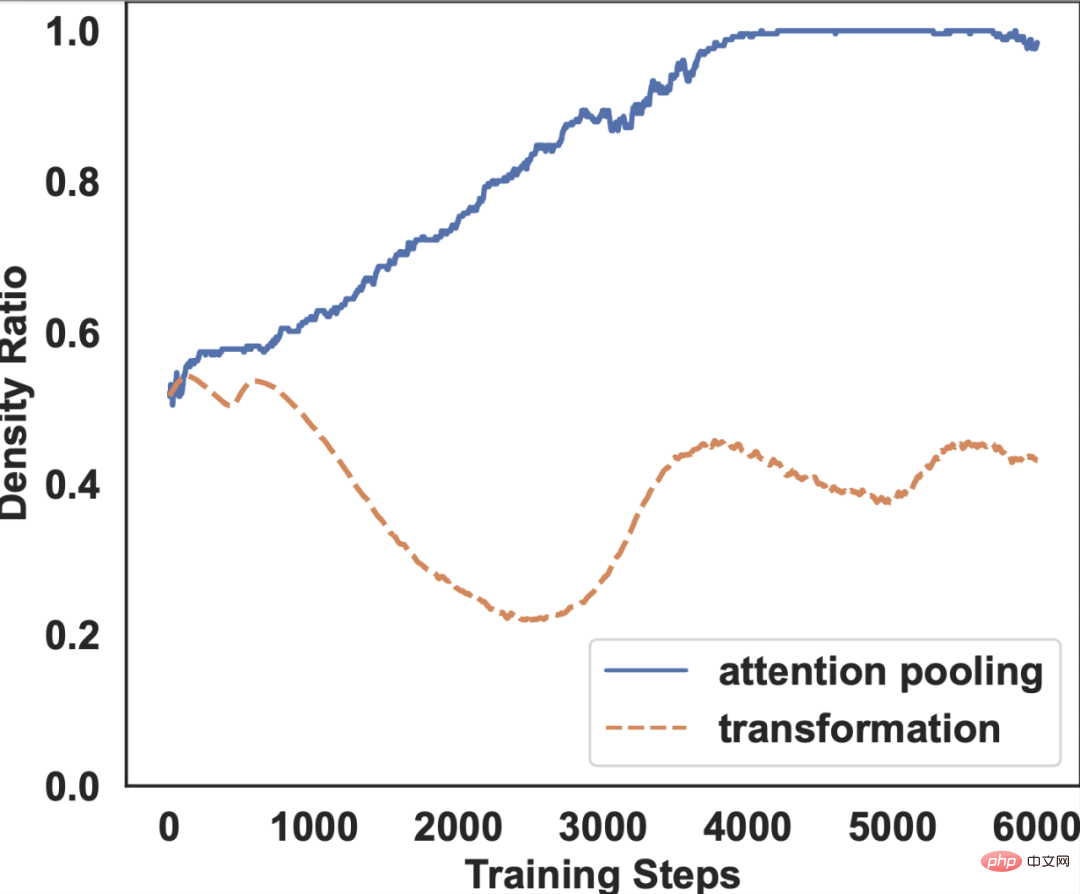
## Readout module.
attention pooling weight can be maintained at a higher level. We can also observe the same trend on other datasets and other GNN-based SBR models.
delete the GNN propagation part and only retain the initial embedding layer;
(2) Model designers should be moreFocus on the attention-based Readout module.
##According to psychopathology research, human reasoning is essentially a multi-level information processing process.
For example, by comprehensively considering the underlying goods Alice interacts with, humans can obtain some higher-level concepts, such as whether Alice plans to prepare for a wedding or decorate new house. After determining that Alice is likely planning a wedding, the human then considers wedding items related to the bouquet, such as wedding balloons, rather than decorative items related to the bouquet, such as a wall mural.
Adopting this multi-level reasoning strategy in recommendation systems can help prune a large search space and avoid local optimal solutions, by considering the user The overall behavior trend converges to a more satisfactory solution.
Therefore, this article hopes to introduce this multi-layer reasoning mechanism
into the Readout module design .
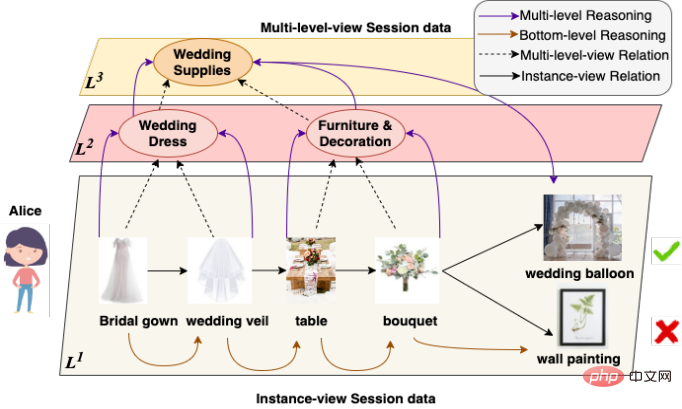
However, obtaining these high-level concepts is not an easy task, because simply enumerating these high-level concepts is not realistic and is likely to introduce irrelevant concepts and interfere with the performance of the model.
To address this challenge, this article adopts two SBR-related inductive biases: local invariance and inherent priority. (inherent priority), to reduce the search space .
- Intrinsic priority refers to the last few items in the session that better reflect the user's current interests;
- Local invariance It means that the relative order of the last few items in the session does not affect the user's interest. Therefore, in practice, groups can be formed by different numbers of tail items, and related high-level concepts can be built through these groups.
Here the tail item corresponds to the inherent priority, the group corresponds to local invariance, and the different numbers represent the multi-layered high-level concepts that this article considers.

Proposed model
Therefore, this article proposes a model called Atten-Mixer. The model can be integrated with various encoders. For the input session, the model obtains the embedding of each item from the embedding layer. The model then applies linear transformation to the resulting group representation to generate multi-level user intent queries.
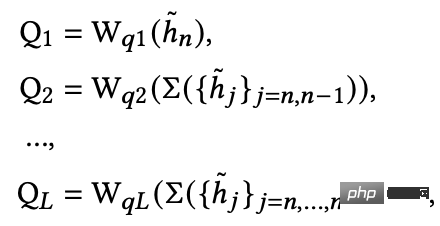
Where Q1 is the instance-view attention query, while the others are higher-level attention queries with different receptive field and local invariant information. Next, the model uses the generated attention queries to attend the hidden state of each item in the session and obtain the final session representation.
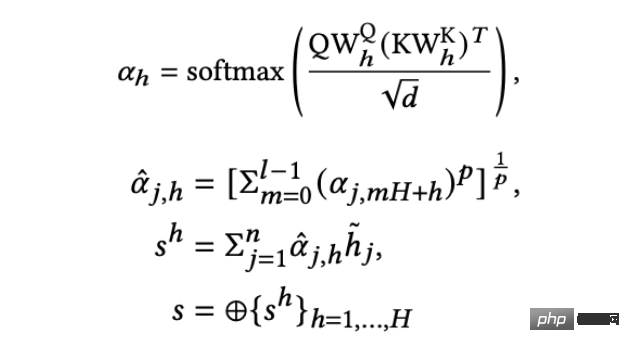
Experiment and results
In the offline experiment, this article uses data from three different fields Sets: Diginetica is a dataset for e-commerce transactions, Gowalla is a dataset for social networks, and Last.fm is a dataset for music recommendations.
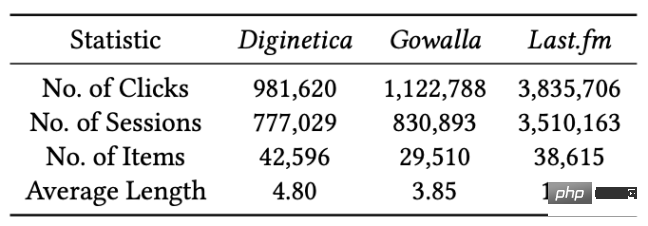
Offline experimental results
(1) Overall comparison
The author compared Atten-Mixer with four baseline methods based on CNN, RNN-based, GNN-based and readout-based.
Experimental results show that Atten-Mixer surpasses baseline methods in terms of accuracy and efficiency on three datasets.
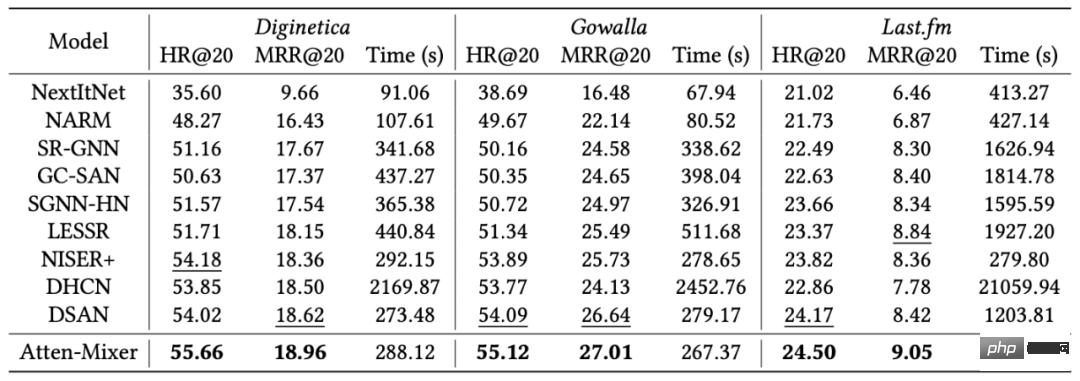
(2) Performance improvement analysis
In addition, the author also embedded the Atten-Mixer module into SR-GNN and SGNN-HN to verify the performance improvement effect of this method on the original model.
Offline experimental results show that Atten-Mixer significantly improves model performance on all data sets, especially when the K value in the evaluation index is small, indicating that Atten-Mixer can help The original model generates more accurate and user-friendly recommendations.
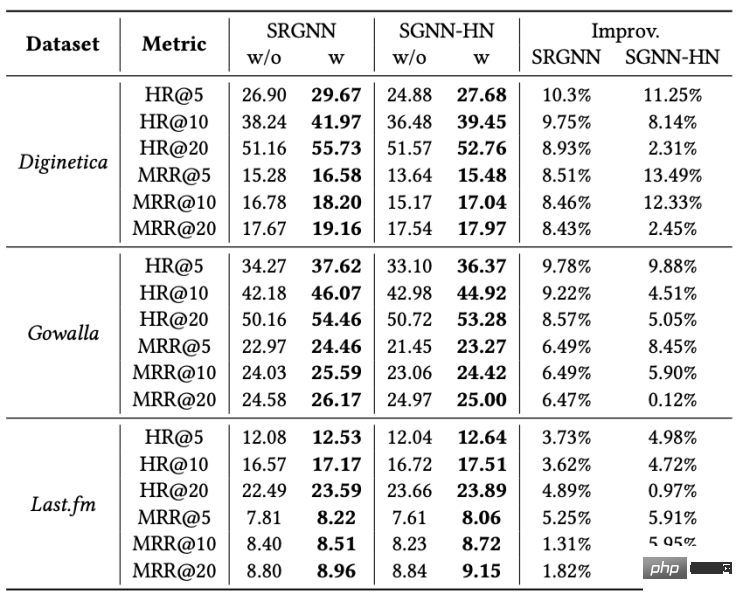
Online experimental results
The author also deployed Atten-Mixer into large-scale e-commerce online services in April 2021. Online experiments show that the multi-level attention mixing network (Atten-Mixer) performs well on various online business indicators. All have achieved significant improvements.
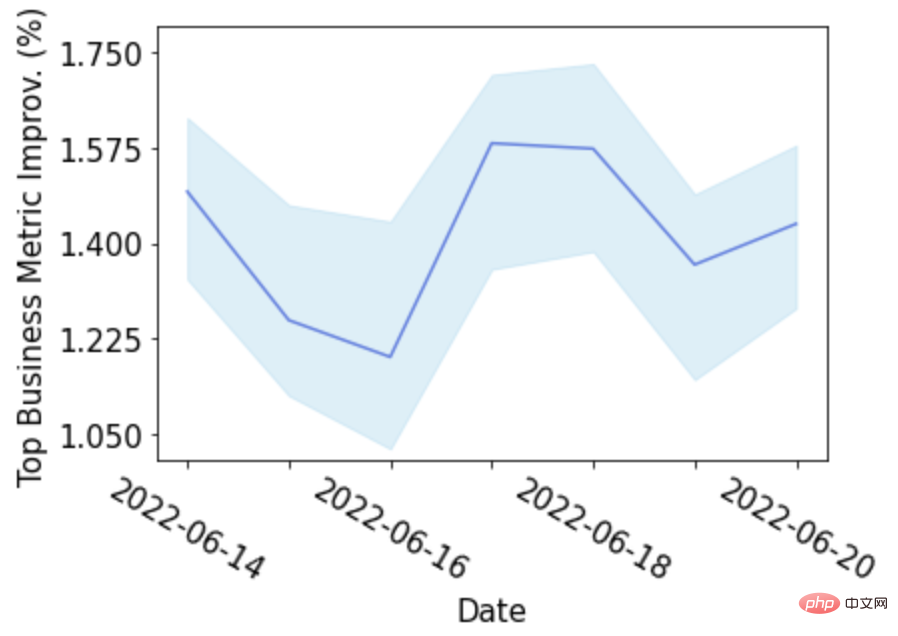
Experimental conclusion
To summarize, Atten-Mixer has multi-level inference capabilities and demonstrates excellent online and offline performance in terms of accuracy and efficiency. The following are some major contributions:
- Complex model architecture is not a necessary condition for SBR, and the innovative architecture design of the attention-based readout method is an effective solution plan.
- Multi-level concept correlation helps capture users’ interests, and using inductive bias is an effective way to discover information-rich high-order concepts.
Research process
Finally, it is worth mentioning that this article has a tortuous development behind it being nominated for the WSDM2023 Best Paper honor. Experience, as one of the authors of the article, Haohan Wang from UIUC, introduced, this article was actually rejected many times during the submission process because it was too simple. Fortunately, the author of the article did not go for the Chinese article. Pandering to the tastes of reviewers, I instead stuck to my own simple approach and ultimately got the article an honorable mention.

The above is the detailed content of To effectively utilize multi-level user intentions, Hong Kong University of Science and Technology, Peking University, etc. proposed a new session recommendation model Atten-Mixer. For more information, please follow other related articles on the PHP Chinese website!

Hot AI Tools

Undresser.AI Undress
AI-powered app for creating realistic nude photos

AI Clothes Remover
Online AI tool for removing clothes from photos.

Undress AI Tool
Undress images for free

Clothoff.io
AI clothes remover

AI Hentai Generator
Generate AI Hentai for free.

Hot Article

Hot Tools

Notepad++7.3.1
Easy-to-use and free code editor

SublimeText3 Chinese version
Chinese version, very easy to use

Zend Studio 13.0.1
Powerful PHP integrated development environment

Dreamweaver CS6
Visual web development tools

SublimeText3 Mac version
God-level code editing software (SublimeText3)

Hot Topics
 The world's most powerful open source MoE model is here, with Chinese capabilities comparable to GPT-4, and the price is only nearly one percent of GPT-4-Turbo
May 07, 2024 pm 04:13 PM
The world's most powerful open source MoE model is here, with Chinese capabilities comparable to GPT-4, and the price is only nearly one percent of GPT-4-Turbo
May 07, 2024 pm 04:13 PM
Imagine an artificial intelligence model that not only has the ability to surpass traditional computing, but also achieves more efficient performance at a lower cost. This is not science fiction, DeepSeek-V2[1], the world’s most powerful open source MoE model is here. DeepSeek-V2 is a powerful mixture of experts (MoE) language model with the characteristics of economical training and efficient inference. It consists of 236B parameters, 21B of which are used to activate each marker. Compared with DeepSeek67B, DeepSeek-V2 has stronger performance, while saving 42.5% of training costs, reducing KV cache by 93.3%, and increasing the maximum generation throughput to 5.76 times. DeepSeek is a company exploring general artificial intelligence
 KAN, which replaces MLP, has been extended to convolution by open source projects
Jun 01, 2024 pm 10:03 PM
KAN, which replaces MLP, has been extended to convolution by open source projects
Jun 01, 2024 pm 10:03 PM
Earlier this month, researchers from MIT and other institutions proposed a very promising alternative to MLP - KAN. KAN outperforms MLP in terms of accuracy and interpretability. And it can outperform MLP running with a larger number of parameters with a very small number of parameters. For example, the authors stated that they used KAN to reproduce DeepMind's results with a smaller network and a higher degree of automation. Specifically, DeepMind's MLP has about 300,000 parameters, while KAN only has about 200 parameters. KAN has a strong mathematical foundation like MLP. MLP is based on the universal approximation theorem, while KAN is based on the Kolmogorov-Arnold representation theorem. As shown in the figure below, KAN has
 Hello, electric Atlas! Boston Dynamics robot comes back to life, 180-degree weird moves scare Musk
Apr 18, 2024 pm 07:58 PM
Hello, electric Atlas! Boston Dynamics robot comes back to life, 180-degree weird moves scare Musk
Apr 18, 2024 pm 07:58 PM
Boston Dynamics Atlas officially enters the era of electric robots! Yesterday, the hydraulic Atlas just "tearfully" withdrew from the stage of history. Today, Boston Dynamics announced that the electric Atlas is on the job. It seems that in the field of commercial humanoid robots, Boston Dynamics is determined to compete with Tesla. After the new video was released, it had already been viewed by more than one million people in just ten hours. The old people leave and new roles appear. This is a historical necessity. There is no doubt that this year is the explosive year of humanoid robots. Netizens commented: The advancement of robots has made this year's opening ceremony look like a human, and the degree of freedom is far greater than that of humans. But is this really not a horror movie? At the beginning of the video, Atlas is lying calmly on the ground, seemingly on his back. What follows is jaw-dropping
 Google is ecstatic: JAX performance surpasses Pytorch and TensorFlow! It may become the fastest choice for GPU inference training
Apr 01, 2024 pm 07:46 PM
Google is ecstatic: JAX performance surpasses Pytorch and TensorFlow! It may become the fastest choice for GPU inference training
Apr 01, 2024 pm 07:46 PM
The performance of JAX, promoted by Google, has surpassed that of Pytorch and TensorFlow in recent benchmark tests, ranking first in 7 indicators. And the test was not done on the TPU with the best JAX performance. Although among developers, Pytorch is still more popular than Tensorflow. But in the future, perhaps more large models will be trained and run based on the JAX platform. Models Recently, the Keras team benchmarked three backends (TensorFlow, JAX, PyTorch) with the native PyTorch implementation and Keras2 with TensorFlow. First, they select a set of mainstream
 AI subverts mathematical research! Fields Medal winner and Chinese-American mathematician led 11 top-ranked papers | Liked by Terence Tao
Apr 09, 2024 am 11:52 AM
AI subverts mathematical research! Fields Medal winner and Chinese-American mathematician led 11 top-ranked papers | Liked by Terence Tao
Apr 09, 2024 am 11:52 AM
AI is indeed changing mathematics. Recently, Tao Zhexuan, who has been paying close attention to this issue, forwarded the latest issue of "Bulletin of the American Mathematical Society" (Bulletin of the American Mathematical Society). Focusing on the topic "Will machines change mathematics?", many mathematicians expressed their opinions. The whole process was full of sparks, hardcore and exciting. The author has a strong lineup, including Fields Medal winner Akshay Venkatesh, Chinese mathematician Zheng Lejun, NYU computer scientist Ernest Davis and many other well-known scholars in the industry. The world of AI has changed dramatically. You know, many of these articles were submitted a year ago.
 FisheyeDetNet: the first target detection algorithm based on fisheye camera
Apr 26, 2024 am 11:37 AM
FisheyeDetNet: the first target detection algorithm based on fisheye camera
Apr 26, 2024 am 11:37 AM
Target detection is a relatively mature problem in autonomous driving systems, among which pedestrian detection is one of the earliest algorithms to be deployed. Very comprehensive research has been carried out in most papers. However, distance perception using fisheye cameras for surround view is relatively less studied. Due to large radial distortion, standard bounding box representation is difficult to implement in fisheye cameras. To alleviate the above description, we explore extended bounding box, ellipse, and general polygon designs into polar/angular representations and define an instance segmentation mIOU metric to analyze these representations. The proposed model fisheyeDetNet with polygonal shape outperforms other models and simultaneously achieves 49.5% mAP on the Valeo fisheye camera dataset for autonomous driving
 Tesla robots work in factories, Musk: The degree of freedom of hands will reach 22 this year!
May 06, 2024 pm 04:13 PM
Tesla robots work in factories, Musk: The degree of freedom of hands will reach 22 this year!
May 06, 2024 pm 04:13 PM
The latest video of Tesla's robot Optimus is released, and it can already work in the factory. At normal speed, it sorts batteries (Tesla's 4680 batteries) like this: The official also released what it looks like at 20x speed - on a small "workstation", picking and picking and picking: This time it is released One of the highlights of the video is that Optimus completes this work in the factory, completely autonomously, without human intervention throughout the process. And from the perspective of Optimus, it can also pick up and place the crooked battery, focusing on automatic error correction: Regarding Optimus's hand, NVIDIA scientist Jim Fan gave a high evaluation: Optimus's hand is the world's five-fingered robot. One of the most dexterous. Its hands are not only tactile
 DualBEV: significantly surpassing BEVFormer and BEVDet4D, open the book!
Mar 21, 2024 pm 05:21 PM
DualBEV: significantly surpassing BEVFormer and BEVDet4D, open the book!
Mar 21, 2024 pm 05:21 PM
This paper explores the problem of accurately detecting objects from different viewing angles (such as perspective and bird's-eye view) in autonomous driving, especially how to effectively transform features from perspective (PV) to bird's-eye view (BEV) space. Transformation is implemented via the Visual Transformation (VT) module. Existing methods are broadly divided into two strategies: 2D to 3D and 3D to 2D conversion. 2D-to-3D methods improve dense 2D features by predicting depth probabilities, but the inherent uncertainty of depth predictions, especially in distant regions, may introduce inaccuracies. While 3D to 2D methods usually use 3D queries to sample 2D features and learn the attention weights of the correspondence between 3D and 2D features through a Transformer, which increases the computational and deployment time.





